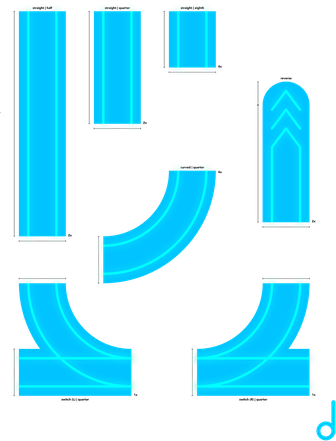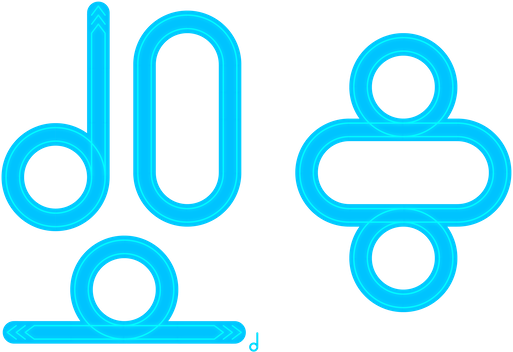How To Make (Almost) Anything
Week 0 - Computer Aided Design
Introduction
In HTMaA, we were first tasked with describing our final project in a variety of digital mediums. I struggled with committing to an idea as I felt unqualified to identify a project that would creatively and effectively syngerize all the tools we learn this semester. With that being said, I came up with a project that involves music and play that I'm sure will change as the semester unfolds. I'll probably be returning to this page often to show new potential ideas for the class. Even as I write this, my new design goals have evolved into make something that could be exhibited at the Exploratorium.
Tracks
Concept
Tracks is a modular, musical interface designed to allow the user to physically manipulate music through a series of train-track like primatives. The user can lay tracks of various lengths corresponding to half notes, quarter notes and eighth notes, create loops that allow for repeats, and reverse the train to play the music backwards. Additionally, each train primative represents a different type of instrumentation. For example, a rectangular train would represent percussion while a round train would represent piano.
2D Vector Design

figure 1
In figure 1, you can see the different primatives and their relative dimension to one another. The longest vertical track represents a half note, while the shortest vertical track represents an eighth note. In figure 2, you can see possible track configurations along with a logo design made from the existing track primatives.

figure 2
In the above configurations, form defines function. The configuration in the top left, doubling as a music note logo, would be able to play a quarter note beat on loop until it exits the loop, then it would move down the track until it reached the reverse piece at which point it would turn around and re-enter the loop, now playing the notes in reverse. The oval shaped track to the right would be able to play a melody on loop indefinitely. Since the tracks are proportioned relative to each other, one half note track could be replaced with two quarter note tracks. A quarter note track could be replaced with two eighth note tracks. The configuration on the bottom left, represents a track that can enter and exit the loop in either direction, playing the melody of four quarter note pieces in forward and reverse. The track configuration on the right would be able to enter and exit three distinct loops of melody, with the loop in the middle being twice as long as the outer loops.